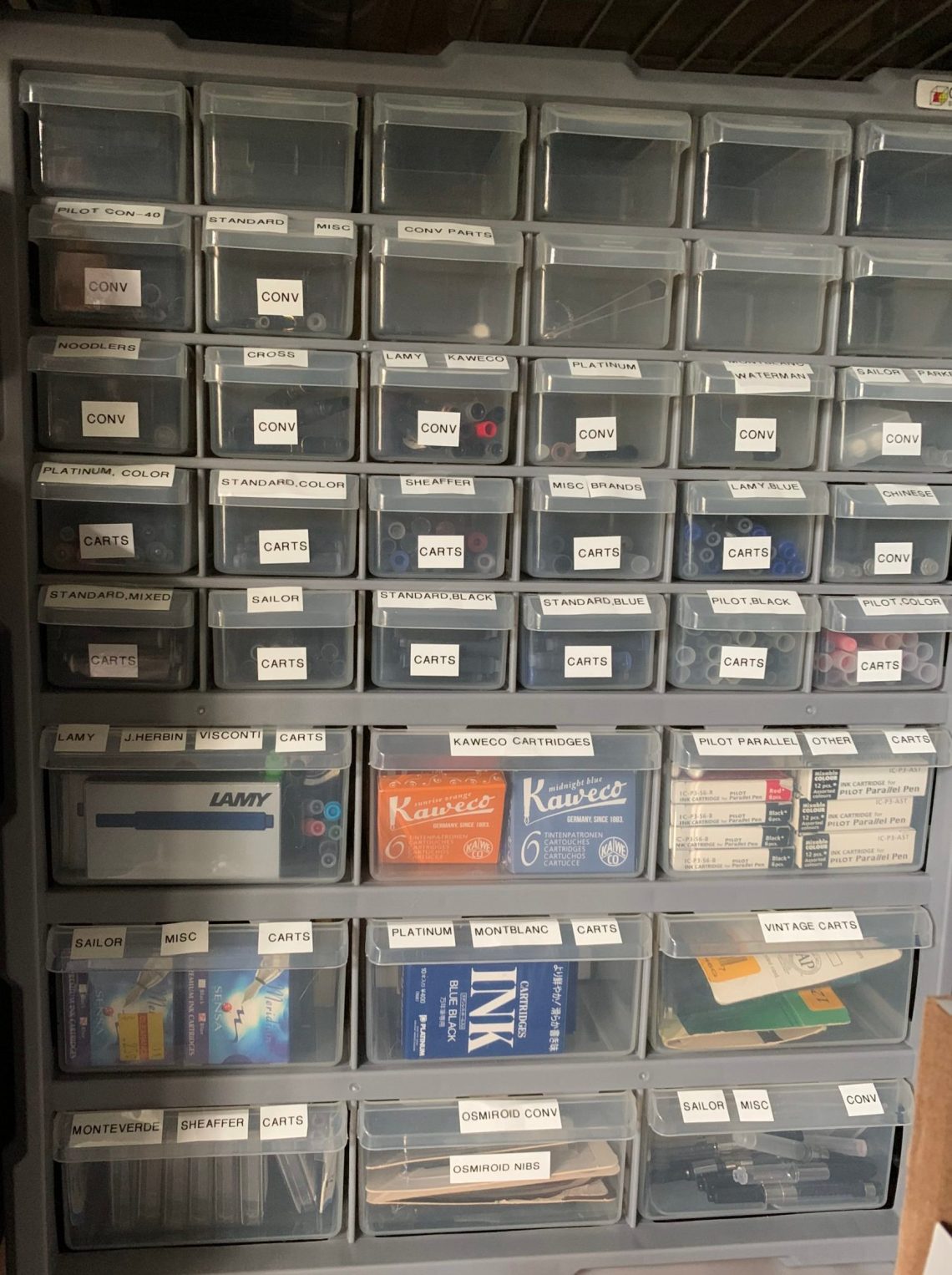I recently realized I had accumulated quite a stack of sketchbooks to review. I was not sure the best way to present them so I decided to just review them altogether. There are EIGHT different sketchbooks from seven different companies and include different types of paper, binding methods, number of pages, price points and other variables.
Why review them together? Because when I am picking out sketchbooks, I am usually looking for some key features regardless of other variables. Specifically, I look for paper durable enough to withstand a variety of pen, ink and water tools (watercolor markers, some light watercolor, etc).
Will I reject a sketchbook if it doesn’t an elastic closure or gusseted pocket in the back? No. Am I less likely to buy a notebook again if it doesn’t lay flat? Maybe. Will I abandon or trash a sketchbook with crappy paper? Yes. Everytime.
I use sketchbooks like other people might use a regular notebook — except instead of random ideas written out, I will sketch out thumbnails for a potential new product, practice lettering and calligraphy, paint my lunch or a sleeping cat, write notes, test out new inks, glue down some random bits, etc. This means good paper is paramount. A lay flat binding is highly advantageous but if the binding is good (Smyth sewn or the like) then I can manhandle it until is does lay flat.
So, with these specifications, I decided to go ahead and include all EIGHT sketchbooks I currently have and use the same criteria to tests and compare:
- fountain pen ink
- watercolor test
- various writing pens
The notebooks I tested are as follows:
|
Notebook |
Size |
Page Count |
Paper Weight |
Binding |
Bonus features |
MSRP |
| Stillman & Bern Alpha | 90×139 mm (3.5×5.5”) | 92 pages (46 sheets) | 150gsm | Softcover | $11.95 | |
| Stillman & Bern Delta | 90×139 mm (3.5×5.5”) | 52 pages (26 sheets) | 270 gsm | Softcover | $11.95 | |
| Leuchtturm 1917 Sketchbook | 92×150 mm (A6) | 96 page (48 sheets) | 180 gsm | Hardcover | Two ribbon bookmarks, elastic closure, guested pocket | $17.50 |
| Mossery Sketchbook | 136×193 mm | 70 pages (35 sheets) | 224gsm | Spiral | Elastic, gusseted pock front & back, ribbon bookmark, notebook canoe removed and replaced, included inktober info | $28.50 |
| Viviva Colors Cotton | 147x210mm (A5) | 40 pages (20 sheets) | 300gsm | Hardcover | Flat pocket in back cover (2021 Inktober Edition), included inktober info | $20.00 |
| Clairefontaine Goldline | 148x210mm (A5) | 30 pages (60 sheets) | 180gsm | Hardcover | Pencil loop, elastic closure | $15.25 |
| Maruman Soho Sketch | 182x257mm (B5) | 100 sheets | 96gsm | Glue bound pad | $18.00 | |
| Shinola Sketchbook | 203×235 mm (8×9.25”) | 112 pages (56 sheets) | 100lb (approx 160gsm) | Hardcover | Elastic closure, gusseted pocket, ribbon bookmark | $30.00 |
The chart above is organized by size with the smallest A6 (3.5×5.5″) books first then A5, B5 and the largest at 8×9.25″. The chart lists most sketchbooks by their European sizes as I suspect most readers are fairly familiar with A5 size (roughly 5.5×8.5″ for those unfamiliar) and A6 is essentially half the size of an A5.

The paper weights vary from 96gsm all the way up to 300gsm but just because a paper is very heavy weight did not mean it was better. The papers also had different textures as well, from very smooth to very rough.
In terms of color, the paper color is also an array from a bright white to a deep ivory.

The sketchbooks I tested also had an array of binding and cover options. What this allowed me to do is establish that I don’t really care about the binding or the cover material as long as the paper is good and the overall sketchbook is durable. I prefer a hard- or softbound book over the spiral or pad. I find that pads do not have durable enough covers and thee pages may fall out when I least expect it. Though pads do make it easy to remove pages for hanging, scanning or burning, whichever the case may be. Hard or softbound sketch books, when bound well, can bee used “across the fold” for a larger format that is harder to do with a spiral bound. Spiral bound are the easiest to fold open but the rings can get in the way for some people.
Hot Takes:
So, let’s cut to the “which is your favorite.” Here is my ranking:













































